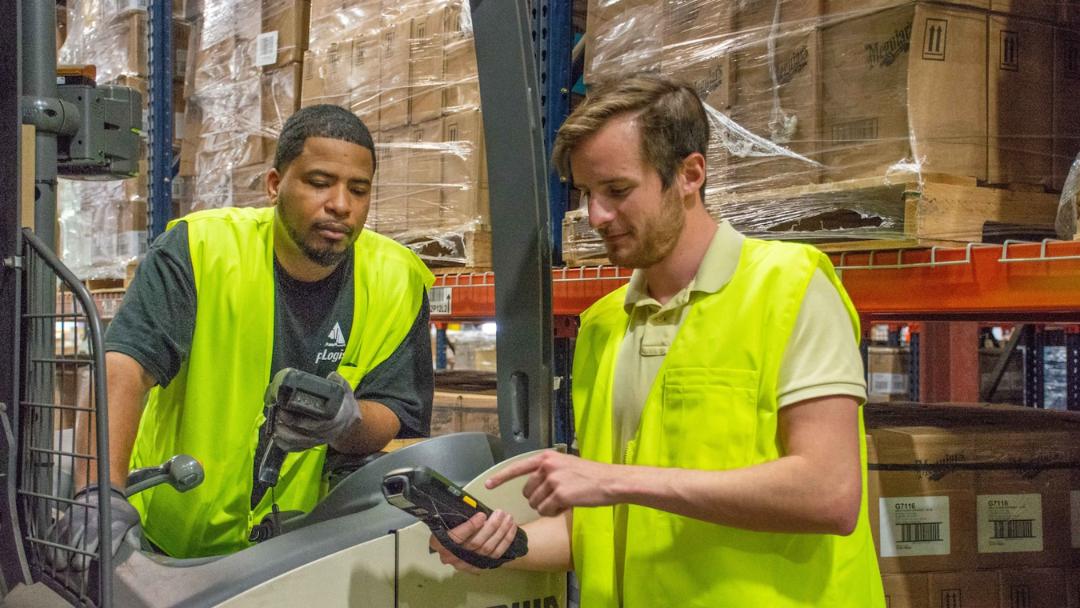The phrase “temp-to-hire” can create a lot of different feelings. Some people see this as an exciting opportunity, where if you love the job you may be able to sign on permanently. Some more cautious job seekers see it as the chance to try before you buy. If you don’t like the position, you don’t have to stay long-term, but if it’s the right fit, you can. Some others get a little stressed out, as though a temp-to-hire position is an audition - and you have to do everything perfectly in order to get the role.
The truth is—at least from our perspective—that all three are true. A temp-to-perm job is an opportunity for a permanent job, if you like it. It’s a chance to make sure you like the job and are good at it before you take the next step. And it’s also a way that employers can make the same choice—so they know you’re happy and a good fit before you become a permanent employee. When you transition to a permanent employee, you and your new manager are both making the choice to stick with each other.
So how do you turn a temp-to-hire job into a permanent position? Keep reading to find out.
How temp-to-hire works
This type of job transition is actually pretty straightforward. Jobs that are advertised as temp-to-hire or temp-to-perm are positions where the employer’s long-term goal is to hire a permanent employee.
Often, they’ll post these as temp-to-hire jobs so they can make sure a new employee is the right fit, and likes the job, before they become permanent. They’re looking for people who meet expectations, are good at the position, and bring a positive attitude to work. Then, after a set amount of time (this can be a number of weeks, months, shifts, or other measurement), individuals are converted from temp agency employees to permanent employees of the company.
What changes when you get converted? A few things. First, your paycheck comes from a different place. You may have to re-do onboarding paperwork and your direct deposit when you become a permanent employee. Your benefits will also shift—for example, if you were taking advantage of Employbridge's health insurance, you would need to switch to getting insurance through your new employer. In addition, there are some processes that may change. For example, Employbridge employees using Bluecrew will clock in and out via the Bluecrew app. After you are converted with an employer, you’ll need to use their time tracking system instead.
However, everything else about the job should remain the same. And since you’ve already been there for some time, you should already know what to expect.
What employers look for
So how do you take that temp-to-perm job and turn it into a permanent position? There are some things that will be specific to the individual job or manager—skills it takes to be successful or traits that managers look for in stellar employees.
But there are a lot of things that are common across the majority of companies. These are a few of the common things we see from hiring managers who are excited to convert their temp workers into permanent employees:
1) Reliability
When a manager is looking to hire, one thing they really want to know is if they can count on you. Are you going to show up on time? Are you going to get your work done? When you say you’re going to do something, do you follow through?
Over and over again, these traits stand out in top workers. When a manager feels confident that you’ll show up on time and get your work done, they trust you. And that trust is key for building a strong manager/worker relationship.
2) Curiosity
Often, when we talk to our clients about talent who really stand out, curiosity is one of the things they’ll point out. Curious people are the ones who want to know more about the business, understand processes, and help make things run better. They know what impact they’re making at work, and can prioritize what they need to do first because they know why they’re doing it.
So when you’re looking to impress an employer, don’t hold back your questions. If you want to know how something works or what’s most important, don’t hesitate to ask. You’re more than a cog in a machine, and curiosity shows that you’re invested in the job and you’re here to make a difference.
3) Willingness to learn
Nobody knows everything. And when you’re at a new job, there’s a lot to learn. When you come in ready to learn, to take feedback, and to improve, managers notice.
It’s not always easy to take critical feedback in stride. But when your employer sees you make adjustments, learn on-the-job, and steadily get better at what you’re doing, they see your potential to grow. Workers who can do these things often get singled out to learn new skills, take on new challenges, and even become team leads or managers in the future.
4) A positive attitude
Positive people are good team members. They raise up those around them, they improve the work environment, and they make managers’ lives easier. No matter how great you are at your job, managers see a red flag if you have a negative attitude.
Bring a good attitude to work, and others will notice. Positivity is contagious, and sometimes your attitude can make all the difference.
Starting a temp-to-hire job is a big opportunity, if you’re ready to take advantage of it.


